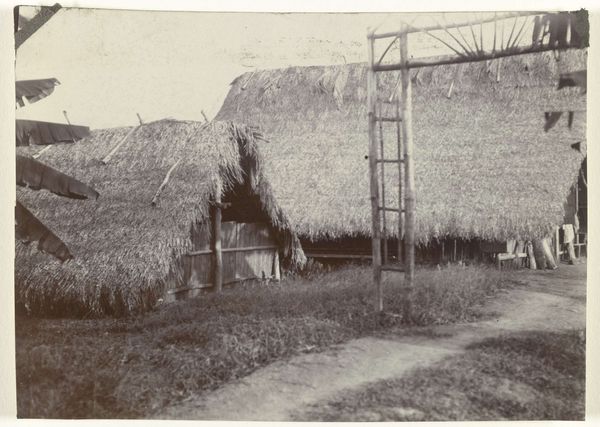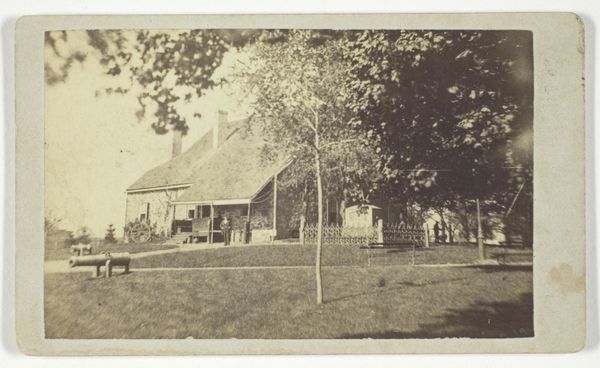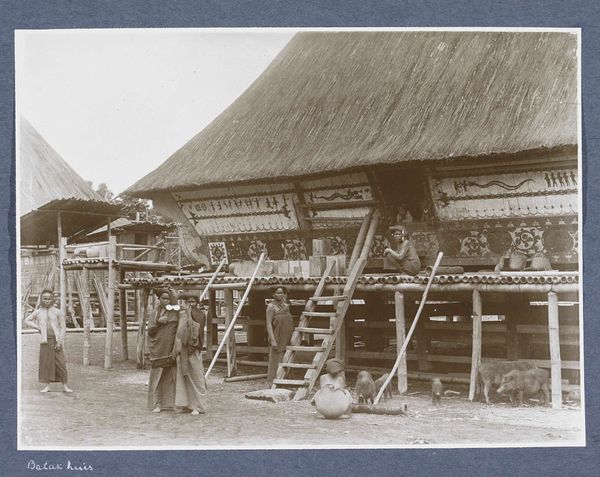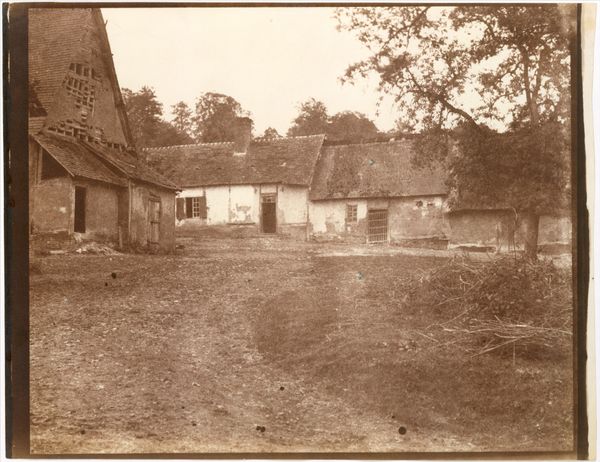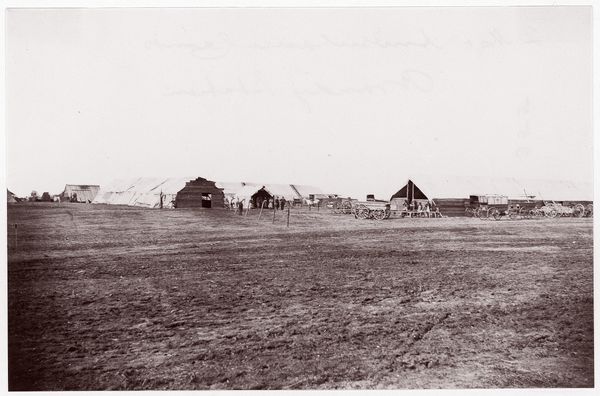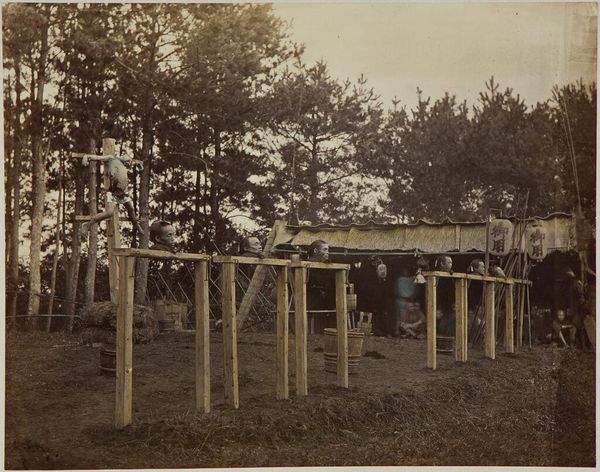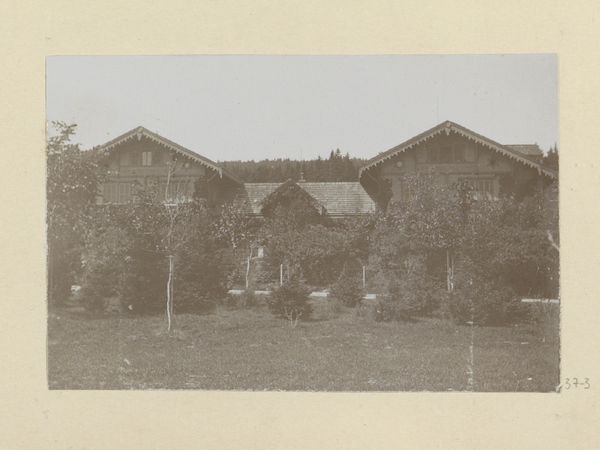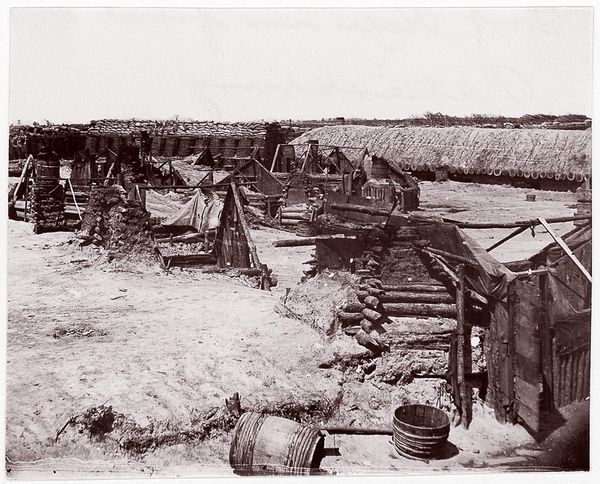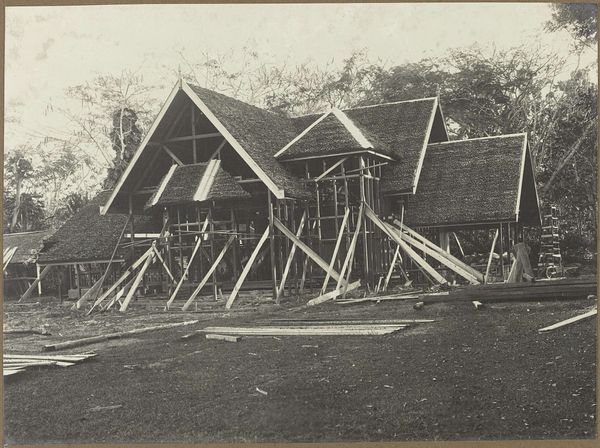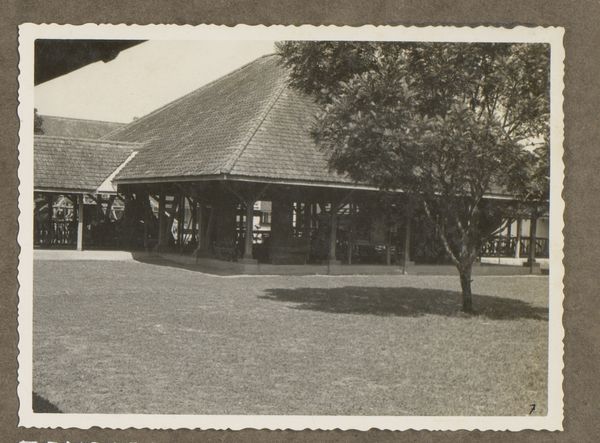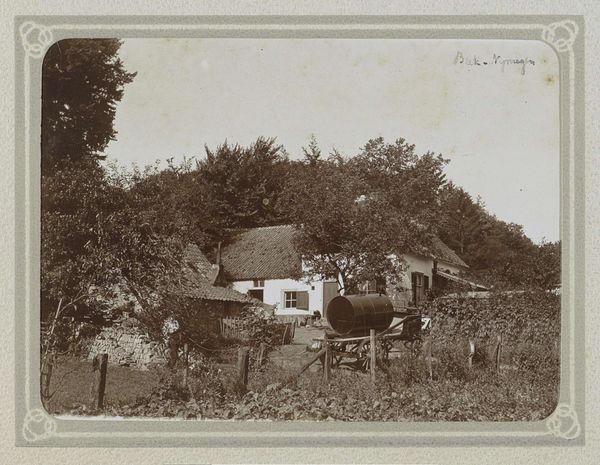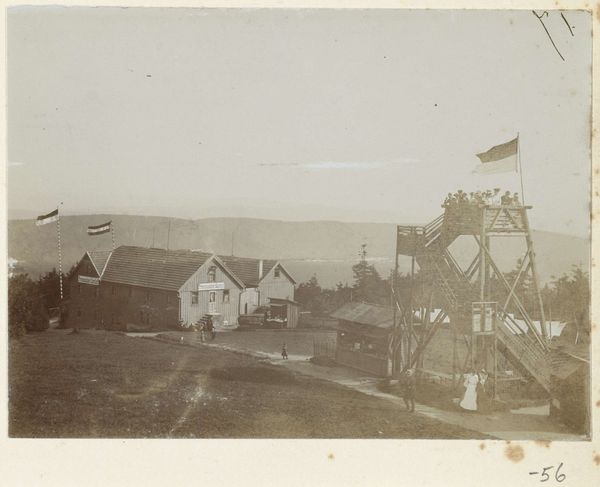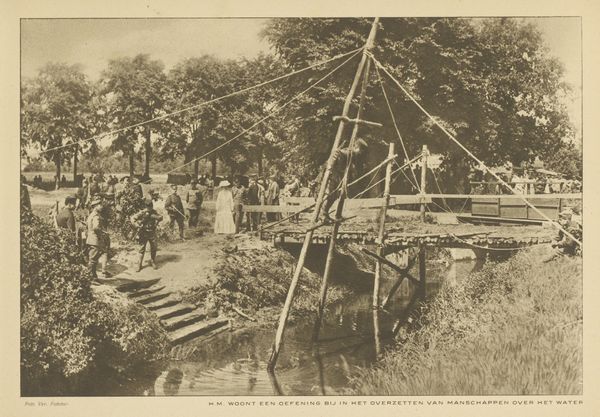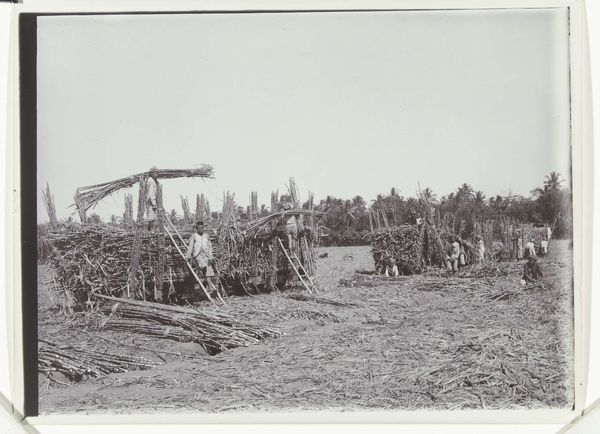
photography, gelatin-silver-print
landscape
photography
gelatin-silver-print
modernism
realism
Dimensions: height 90 mm, width 121 mm
Copyright: Rijks Museum: Open Domain
Curator: Here we have "Werkstukken op de Prinses Juliana School," a gelatin-silver print photograph taken in 1933 by an anonymous photographer. Editor: Wow, it feels desolate, almost ghostly. Those skeletal wooden structures against that large building give it a really eerie atmosphere. I'm also struck by how... organized, almost regimented, the arrangement is. Curator: Yes, that sense of order is quite deliberate. The photograph likely documents an outdoor classroom at the Princess Juliana School. We are observing what appears to be carpentry projects undertaken by students. It’s tempting to read these unfinished structures as symbols of modernity’s faith in progress through manual training and social reform. Editor: Huh, progress...I initially felt a real lack of human presence. Thinking of kids hammering away there is much nicer! The lack of a human element in the photograph makes it more about shape and shadows to me; almost like conceptual architecture, or something. Curator: Precisely. Gelatin-silver printing made it easier to produce sharply focused images. This kind of technical precision in photography became more prevalent at this time, reflecting modernism's wider aims of functionalism in design and instruction. Consider too that photography became integral to documentary and education, furthering that connection between visual representation and nation-building projects. Editor: So this is the art of being useful—in that spirit, I suppose—and of using every available technology for the purposes of mass progress. And how does that make me *feel*... I'm thinking these serious tones may clash against the childlike essence, maybe they were simply having a fun afternoon. It also speaks a bit about social constructs of a place, the outdoors; almost free until this framework reminds us of control. Curator: It highlights, perhaps inadvertently, how environments built for learning could be seen to convey control even amidst ideals of freedom of expression. In some senses that conflict exists within the picture itself: children outside using modern tools. Editor: Well, after our talk I can’t shake a feeling it still retains of progress and a hint of social tension from a school scene on open grass; not as simple and charming of course. Thanks! Curator: An astute assessment. It’s remarkable how a simple document of children learning could hold a lens on society's bigger narratives and our more personal emotional projections.
Comments
No comments
Be the first to comment and join the conversation on the ultimate creative platform.
